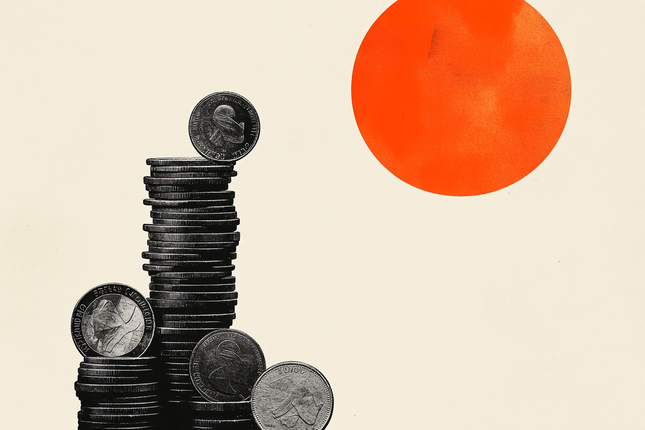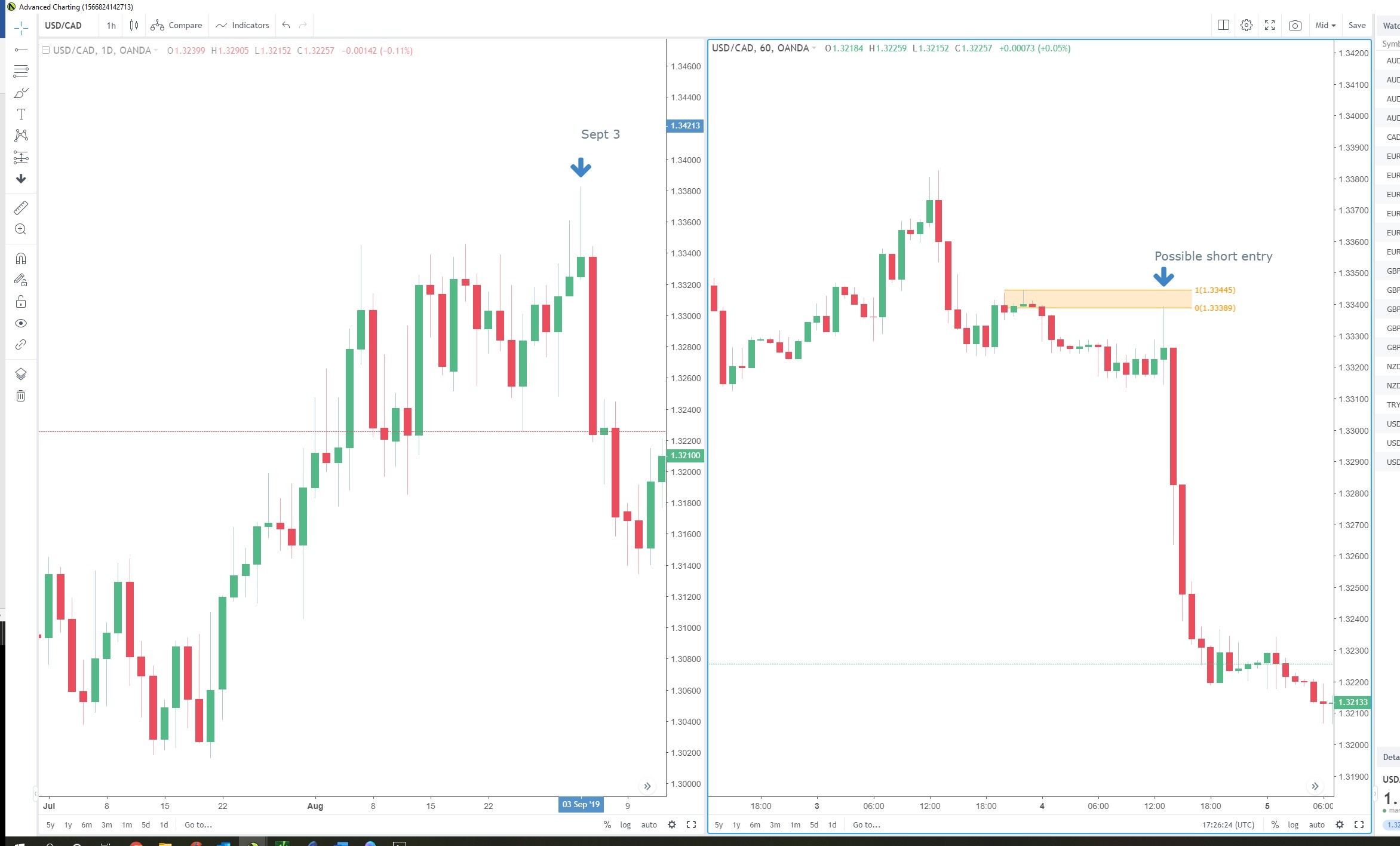Hello traders! This week’s newsletter will be a short lesson on candlestick stock charts and how to use them for hints on your trades.
First of all, Japanese candlesticks were first invented in Japan hundreds of years ago to try and predict the future price of rice. The interpretation of candlesticks is very fast and efficient, which is why they have remained so popular even in this day and age. There are dozens and dozens of different patterns that exist in the world of candlesticks. I plan on giving you an easy way to interpret the very basics of them to help with your trading.
Every candlestick shows us four data points, the open (first trade in the time period), the high (highest trade in the time period), low (lowest trade in the time period and the close (last trade in the time period). Of these four data points, each is important in its own way, but for this technique we are more interested in the close.
In the following image, you can see that I’ve marked two different candles with blue arrows, One and Two. I’ve also broken down these candles into five equal parts – quintiles. I look at where the candle closes within this range of quintiles to give me a bias of, from very bearish to very bullish.
If the candle closes in the highest quintile, that is very bullish (meaning a strong bias to higher prices).
If the candle closes in the next lower quintile, that is bullish (meaning a bias to higher prices).
If the candle closes in the middle quintile, the bias is neutral.
If the candle closes in the next lower quintile, that is bearish (meaning a bias to lower prices).
If the candle closes in the lowest quintile, that is very bearish (meaning a strong bias to lower prices).
So, on the candle labeled One, it closed in the top quintile giving a very bullish bias/hint for what will happen in the next candle. Lo and behold, the next went up as well! As you look at each of the following green bodied candles, you can see that bullish bias held until the move was nearly complete.
On the candle labeled Two, it closed in the lowest quintile, giving a very bearish bias/hint for what will happen in the next candle. Lo and behold, the next candle went down as well!
Notice the following large red candle closed near the very bottom of its range as well, but the next candle obviously didn’t continue down. Location on the chart is more important than the shape of the candle. What this means is that a very bearish candle after a long move down is much less important than after a long move up! On the other side of the coin, a very bullish candle after a long move up is much less important than after a long move down!
So how can we use this information? On the following image, I have put on two charts of the USDCAD. The chart on the left is a daily chart with the very bearish candle from September 3 marked in.
Notice we already had a move up from about 1.3020 to 1.3380 over a period of six weeks or so. The upward trend seems to be getting tired, the Sept 2 and 3 closing prices are indicating a bearish bias. On Sept 4, price traded below the Sept 3 low, indicating the bears are finally taking over. The plan would be to then go short in a smaller time frame supply zone.
The breakdown is, look for a bearish close after a move up into supply, drill down to a smaller time frame to find a supply zone for a short entry. Look for a bullish close after a move down into demand, drill down to a smaller time frame to find a demand zone for a long entry.
This content is intended to provide educational information only. This information should not be construed as individual or customized legal, tax, financial or investment services. As each individual's situation is unique, a qualified professional should be consulted before making legal, tax, financial and investment decisions. The educational information provided in this article does not comprise any course or a part of any course that may be used as an educational credit for any certification purpose and will not prepare any User to be accredited for any licenses in any industry and will not prepare any User to get a job. Reproduced by permission from OTAcademy.com click here for Terms of Use: https://www.otacademy.com/about/terms
Editors’ Picks

EUR/USD Price Annual Forecast: Growth to displace central banks from the limelight in 2026 Premium
What a year! Donald Trump’s return to the United States (US) Presidency was no doubt what led financial markets throughout 2025. His not-always-unexpected or surprising decisions shaped investors’ sentiment, or better said, unprecedented uncertainty.

US Dollar Price Annual Forecast: 2026 set to be a year of transition, not capitulation Premium
The US Dollar (USD) enters the new year at a crossroads. After several years of sustained strength driven by US growth outperformance, aggressive Federal Reserve (Fed) tightening, and recurrent episodes of global risk aversion, the conditions that underpinned broad-based USD appreciation are beginning to erode, but not collapse.

GBP/USD Price Annual Forecast: Will 2026 be another bullish year for Pound Sterling? Premium
Having wrapped up 2025 on a positive note, the Pound Sterling (GBP) eyes another meaningful and upbeat year against the US Dollar (USD) at the start of 2026.

Gold Price Annual Forecast: 2026 could see new record-highs but a 2025-like rally is unlikely Premium
Gold hit multiple new record highs throughout 2025. Trade-war fears, geopolitical instability and monetary easing in major economies were the main drivers behind Gold’s rally.

Top 10 crypto predictions for 2026: Institutional demand and big banks could lift Bitcoin
Bitcoin’s (BTC) adoption story is unraveling and the king crypto could see institutional demand return in 2026. Crypto asset managers like Grayscale are betting on Bitcoin’s rally to a new all-time high next year, and themes like Bitcoin as a reserve asset are emerging.
RECOMMENDED LESSONS
Making money in forex is easy if you know how the bankers trade!
I’m often mystified in my educational forex articles why so many traders struggle to make consistent money out of forex trading. The answer has more to do with what they don’t know than what they do know. After working in investment banks for 20 years many of which were as a Chief trader its second knowledge how to extract cash out of the market.
5 Forex News Events You Need To Know
In the fast moving world of currency markets where huge moves can seemingly come from nowhere, it is extremely important for new traders to learn about the various economic indicators and forex news events and releases that shape the markets. Indeed, quickly getting a handle on which data to look out for, what it means, and how to trade it can see new traders quickly become far more profitable and sets up the road to long term success.
Top 10 Chart Patterns Every Trader Should Know
Chart patterns are one of the most effective trading tools for a trader. They are pure price-action, and form on the basis of underlying buying and selling pressure. Chart patterns have a proven track-record, and traders use them to identify continuation or reversal signals, to open positions and identify price targets.
7 Ways to Avoid Forex Scams
The forex industry is recently seeing more and more scams. Here are 7 ways to avoid losing your money in such scams: Forex scams are becoming frequent. Michael Greenberg reports on luxurious expenses, including a submarine bought from the money taken from forex traders. Here’s another report of a forex fraud. So, how can we avoid falling in such forex scams?
What Are the 10 Fatal Mistakes Traders Make
Trading is exciting. Trading is hard. Trading is extremely hard. Some say that it takes more than 10,000 hours to master. Others believe that trading is the way to quick riches. They might be both wrong. What is important to know that no matter how experienced you are, mistakes will be part of the trading process.
The challenge: Timing the market and trader psychology
Successful trading often comes down to timing – entering and exiting trades at the right moments. Yet timing the market is notoriously difficult, largely because human psychology can derail even the best plans. Two powerful emotions in particular – fear and greed – tend to drive trading decisions off course.




